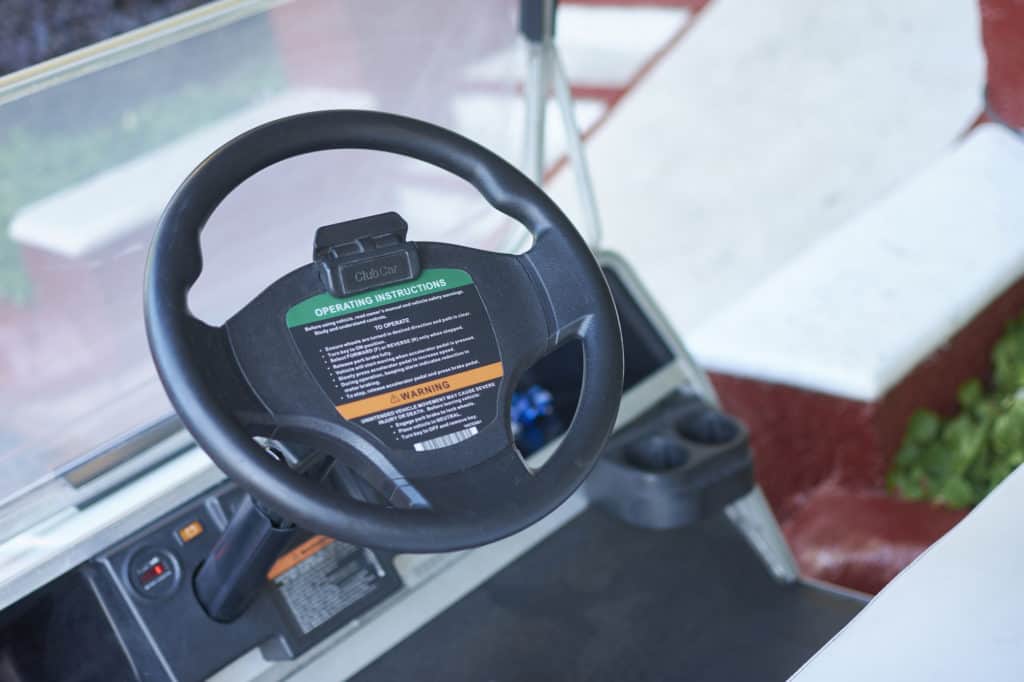
A golf cart is essentially a vehicle and like every vehicle, it requires regular maintenance and upkeep.
This includes engine or battery maintenance depending on the type of golf cart you own along with regular maintenance of brakes and other essential systems.
However, despite the regular upkeep, your golf cart may still develop a number of issues because that is what machines do.
This includes issues with the steering wheel.
A malfunctioning steering wheel is not only annoying, but it can also prove to be very dangerous.
Golf carts tread on uneven terrains, which demands a fully functioning set of breaks and steering wheel.
Any loss of efficiency in either of these essential components can put the driver in a precarious situation.
A steering wheel that makes the cart turn too little, too much or not at all can be an annoyance at the very least and a potential hazard at the most.
It does take a bit of patience, but if you know what to look for and how to tackle particular issues, you can get back to golfing in no time.
In this article, we identify some of the most common issues you can face with the steering wheel of your golf cart and how you can resolve them with a little bit of knowledge and the right tools.
How To Remove A Golf Cart Steering Wheel
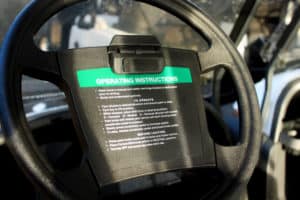
As a key component of a golf cart, the steering wheel will need to be repaired or replaced at some point if you wish to maintain the structural integrity and performance of your vehicle.
Any kind of repair or replacement will require you to remove the steering wheel.
Therefore, it is important to have basic knowledge of all the systems that hold the steering wheel in place.
You will also need to get accustomed to the order in which these components need to be removed and reassembled.
Otherwise, you run the risk of driving with an improperly fitted steering wheel.
With the right tools, removing the steering wheel is a fairly straightforward process.
Follow the steps we have outlined below to successfully remove the steering wheel from your golf cart:
- Check the back of the steering wheel’s centerplate for screws. Release the plate by removing the screws if there are any. Some newer golf carts don’t feature any screws. The centerplate is, instead, held in place through a snapping system.
- With the help of an adjustable wrench, loosen the single nut at the center of the wheel that connects to the shaft underneath. The nut is commonly 15”/16” in size but could be different, so an adjustable wrench is essential. Keep loosening the nut until its top becomes level with the steering shaft. This will also be where the golf cart’s steering column ends.
- In order to avoid injury, do not remove the nut completely from the shaft. Otherwise, the steering wheel will pop out with a lot of pressure, which can be dangerous.
- Now, sit back in the driving seat and plant both your feet on the dash of the golf cart in such a manner that the steering wheel is above your arms and knees.
- Use a metal punch to tap the center of the steering column a few times.
- Using your knees, apply pressure on the steering wheel to move it to the front and back repeatedly. Simultaneously, keep pushing and pulling the wheel upward with your hands. Continue both actions until the steering wheel gets free from the splines.
- Finally, completely remove the central nut from the shaft and pull the steering wheel out.
How To Align A Steering Wheel on Your Golf Cart
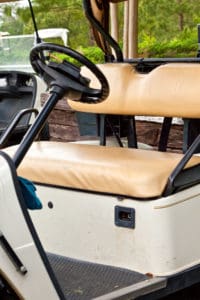
An unaligned steering wheel will take away from the overall performance of the golf cart.
If the steering wheel is not properly aligned, the golf cart will be pulled excessively toward the left or right.
In order to ensure that the golf cart operates with optimal efficiency, the steering wheel must be realigned.
There are several reasons for the steering wheel getting misaligned.
Normally, misalignment occurs when the cart hits a hard surface.
Since golf courses are mostly uneven, misalignment could be a frequent phenomenon.
The steering wheel alignment should be checked periodically and the wheel aligned if need be.
Follow the steps highlighted below to properly align the steering wheel on your golf cart:
- In the event that the misalignment has been caused by hitting a hard surface, the steering wheel can be easily reset by pulling the steering and turning it around to reset it. Use a puller for the pulling action and ensure that the tires are straight.
- For complete realignment, remove the center panel and loosen the central shaft nut. Hit the wheel lightly with a rubber mallet on the back on both sides and then pull the wheel upward. Some penetrating oil can also be used.
- Remove the wheel by following the steps outlined in the previous section and put it back.
- Inspect the threads on both sides of the steering rack where the ball joint threads connect. There should be the same amount of threads on both sides. If this isn’t the case, run the threads in or out one after the other to adjust the count on each side.
- Make sure that the jam nuts sit inside the rack in such a manner that the shaft twists without hitting any of them. Adjust each rack end one by one using a wrench until you discover the desired toe setting. Do a half-turn initially on either side. After reaching the desired setting, slide and tighten the steering wheel.
- For realignment, you will have to drop the steering box and extract the knuckle.
- Turn the wheel until it is in a straight position and turn it completely to the side you want to align. Bring the wheel back to its default position and then turn it completely to the other side. Twist the turnbuckle protruding from the rack until the wheel aligns itself in the 12 o’clock position.
- Loosen one and remove the other two bolts from the steering box. Pull the joint down to the normal position and rotate the steering wheel in the direction you want to align.
How To Fix A Loose Golf Cart Steering Wheel

We now understand that the steering wheel is prone to developing faults over the passage of time.
Just like the wheel can get misaligned, it can also become loose.
There are a number of causes that can loosen the wheel, the most common amongst which is impact with hard surfaces.
This is not uncommon when driving on the uneven landscape of a golf course.
Even extended use can cause the wheel to loosen up.
If you feel that the steering wheel has gotten loose, do not operate the golf cart until the issue has been addressed.
It is unsafe to drive it with a loose steering wheel.
In the list below, we go through some possible scenarios that could be causing this issue and some approaches to consider in order to fix a loose steering wheel:
- First of all, jack up the bearing slops and tie rods to inspect if they have gotten loose. If the issue is caused by a tie rod, uncouple it and then turn the steering wheel equally to each side and bring it back to the center.
- Ensure that the number of turns you rotate the wheel is equal on each side. Reattach the tie rod and see if this resolves the issue. In many cases, adjusting the tie rod will take care of the issue. If it doesn’t, carry on with further steps.
- Pull up the steering box and verify that the spindles and kingpins are still tight. If they are not, tighten them. However, if they are tight, it could mean that the steering box has worn out and needs to be replaced.
- Inspect all the top and bottom bushings of the steering wheel. A loose bushing can also result in a loose steering wheel.
- An aluminum case above the inner tie rods houses a bush that needs to be inspected. The bush will have a large nut with the bush’s drop-link. Move it up, down, back and forth to assess its integrity. If it moves, this could be the cause of the loose steering wheel. Tightening it should fix the steering wheel.
- Examine the pinion and rack arrangement of the steering wheel to see if it has worn out or become loose. If it is worn out, it will have to be replaced.
If it is loose, follow these steps to tighten it:
-
- Secure the wheels by placing wheel chocks at the back and front of any wheel. Using a jack, lift the vehicle from the front and place jack stands behind the front wheels. Slowly lower the cart to let it rest on the stands.
- Turn the wheel completely to one side and lock it. Repeat this a couple of times and check for any slippages.
- Move the rack to one side by turning the wheel slightly in one direction.
- With the help of a large wrench, loosen the bottom adjustment nut on the golf cart.
- Tighten the middle adjustment nut with a flat screwdriver or an Allen wrench. On some carts, this could also be a screw or bolt. Turn it clockwise until it connects with the rack. Then, move it backwards by a 22.5- to 45-degree angle.
- Grip the nut, screw, or bolt with the appropriate tool and tighten it by turning it clockwise. Repeat the third step while checking for the binding.
- If you feel a binding, loosen the adjustment nut by another 22.5 degrees.
- If you observe that the steering wheel is encountering too much play, this could indicate that it is time to get the inner or outer tie rods replaced.
- Lift the cart once again to remove the jack stands from underneath.
- Once the cart is back on the ground, it is safe to remove the wheel chocks.
- Enlist someone’s help to lock the wheel first on the left side, then on the right, and then back on the left. When this is going on, examine the bolt that comes in contact with the spindle as a result of this turning and locking action. Also, observe the joints that link the wheels and the steering. If they are out of sync and don’t move in harmony with the rest of the assembly, address this problem to resolve the issue.
- Inspect the toe-in to confirm that it is in place. There are many reasons that could dislocate the toe-in. The issue could be caused by the riser on the spindle becoming loose. Alternatively, the bolts that connect the risers to the spindles could also have gotten loose. Wheel bearings that are not perfectly tight can also require the toe-in to be adjusted.
How To Fix A Golf Cart Steering Wheel That Is Hard To Turn
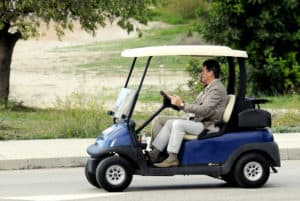
A hard steering wheel will require more effort to turn, making maneuverability difficult.
Seeing as the grassy terrain of the standard golf course is already troublesome to drive on, this could add to the annoyance of an already difficult task.
Following are possibilities that you can explore to fix a hard steering wheel:
- A hard steering can be caused by a worn-out rack and pinion system. Before you consider a replacement, try removing the tie rods from the spindles and perform the steering action. If that doesn’t fix the issue, the system will have to be replaced.
- After removing the spindles, examine the kingpins to check if they are rusty. Rusted kingpins can compromise the pivoting system. Remove the rust and see if that helps. If the rust is too much to remove, consider replacing the kingpins. Individual bindings of the spindle can also be checked separately by swinging them.
- Check to see if the linkage is grinding against other components. If it is, adjust accordingly to eliminate contact.
- If the steering wheel has become hard after hitting a hard surface, one or more bent components inside the steering box could be a possibility. Check each component inside the box for integrity. If a component is bent, straighten and replace it to resolve the issue.
- The issue could also be caused by too much friction in the bronze bushings of the spindles. Pull the spindle and grease the kingpin as well as the steering shaft bearings, the U-joint, and the ball joint.
- Check the air pressure in the tires. Low pressure in the tires can also make turning difficult.
How to Fix a Stuck Golf Cart Steering Wheel
Nothing is more annoying than a stuck steering wheel when you’re in the middle of the golf course.
Although there is no telling when this issue will occur, regular maintenance and greasing could save you getting stranded in the middle of a game.
Try the following to get yourself out of the predicament of a stuck steering wheel:
- Undo the shaft nuts and move them to the end of the threads. Knock on the shaft a few times with the back of a blow hammer. Then, put as much pressure as you can to push and pull the wheel.
- Make a few plunge cuts at a right angle to the shaft to cut the wheel. An angle grinder can also be used for this purpose. This will open up a slot on the bushing. Remove the shaft by inserting a cold chisel in the slot and tapping gently.
- Alternatively, a stuck wheel can be treated by soaking it in a penetrating oil solvent or PB blaster. It is advisable to soak for a couple of days or apply the solvent multiple times. Note that WD-40 won’t work for this purpose.
How To Fix A Squeaky Golf Cart Steering Wheel
A squeaky steering wheel can be annoying and distracting.
Not only this, but it could also be an indication of an upcoming issue.
It is most often erosion that causes the squeaky noise.
If left untreated, it can begin hampering the steering wheel’s regular operation.
It can also cause maneuverability issues that make it difficult for you to drive the golf cart.
Consider the following to get rid of the noise:
- Remove the steering wheel by following the steps outlined in the first section. Use a B12 Chemtool spray to clean the shaft bearing and apply lithium grease. Put the steering back in place and rotate to both sides. Repeat the application a second time.
- Contains 100% High-Energy Solvent Technology
- Helps Keep Injectors, Carburettors, Intake Ports, and Valves Clean
- Quickly Dissolves Gum, Varnish, and Other Fuel Residues
- Disperses Moisture In Conventional Gasoline
- Catalytic Converter and O2-Sensor Safe
- Fit type: Universal Fit
- Flash point: -20.0 degrees_celsius
- Noise from dry gears in the rack and pinion system could also be traveling up the steering column. Pull up the column and rotate a couple of times to allow grease to pass through.
- The helm joints attached above and below the spindles could also be producing the noise. Apply LPS Lube a few times to get rid of the noise.
- LPS NO.1 LUBRICANT 11OZ by LPS MfrPartNo 00116
- The squeaky noise could also be caused by structural damage to the upper plate in which the bolt goes through to the spring. Replacing the plate could effectively eliminate the irritating noise.
How To Fix an Off-Centered Golf Cart Steering Wheel
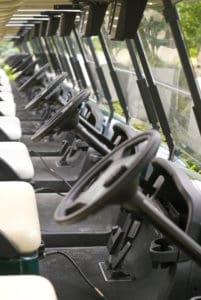
If the steering wheel is off-centered, this can cause a pulling effect toward one side.
An off-centered steering can also put pressure on the engine and cause other issues.
Try out the following to center-align the steering wheel:
- Check that the steering wheel is aligned after adjusting the suspension and steering. If it remains off-centered, pull out the wheel and put it back in with the tires in a straight position.
- Before you try to re-center the wheel, perform the camber and toe adjustment in the same order. Pull out the wheel and then put it back into place.
- Rotate the wheel completely to each side and follow with a half-turn on each side. Then, bring the wheel back to its original position.
- The wheel can also be re-centered by gently hitting its shaft with a dead blow hammer.
FAQ’s

1. Is it safe to drive a cart with a malfunctioning steering wheel?
It is not advisable to leave the steering wheel untreated. In most cases, the issue will hamper operation.
Some issues can make driving difficult, while others can make it outright dangerous.
Always get the wheel looked at by a professional or fix it yourself by following the guide above.
2. Can I perform steering wheel repairs myself?
Steering wheel repairs are quite straightforward and can be carried out easily with the right tools.
However, if you are unsure or don’t have experience with DIY repairs, you might be better served by enlisting the help of a vehicle specialist.
3. What tools do I require to carry out steering wheel repairs?
This depends on the type of repair you’re carrying out.
Generally, you will require the same tools as when carrying out repairs on any other vehicle.
These include a car jack, wheel chocks, adjustable wrench, Allen wrench, a large flat screwdriver, and repair-specific tools mentioned in the above guide.
Conclusion
You won’t take a vehicle out on the road if it is not functioning at a hundred percent.
Using a golf cart with malfunctioning components is equally dangerous, especially when it is a component that determines the driving capability of the vehicle.
It is easy to ignore minor issues in golf carts primarily because they don’t fall under the category of regular vehicles.
However, golf carts have to maneuver a much more difficult terrain than the other vehicles and, therefore, require more attention.
The harder the terrain is to drive on, the more dangerous it is to drive a vehicle with faulty components.
Hence, treat any issues as soon as they occur.
Failure in doing so may cause bigger problems in the long run.


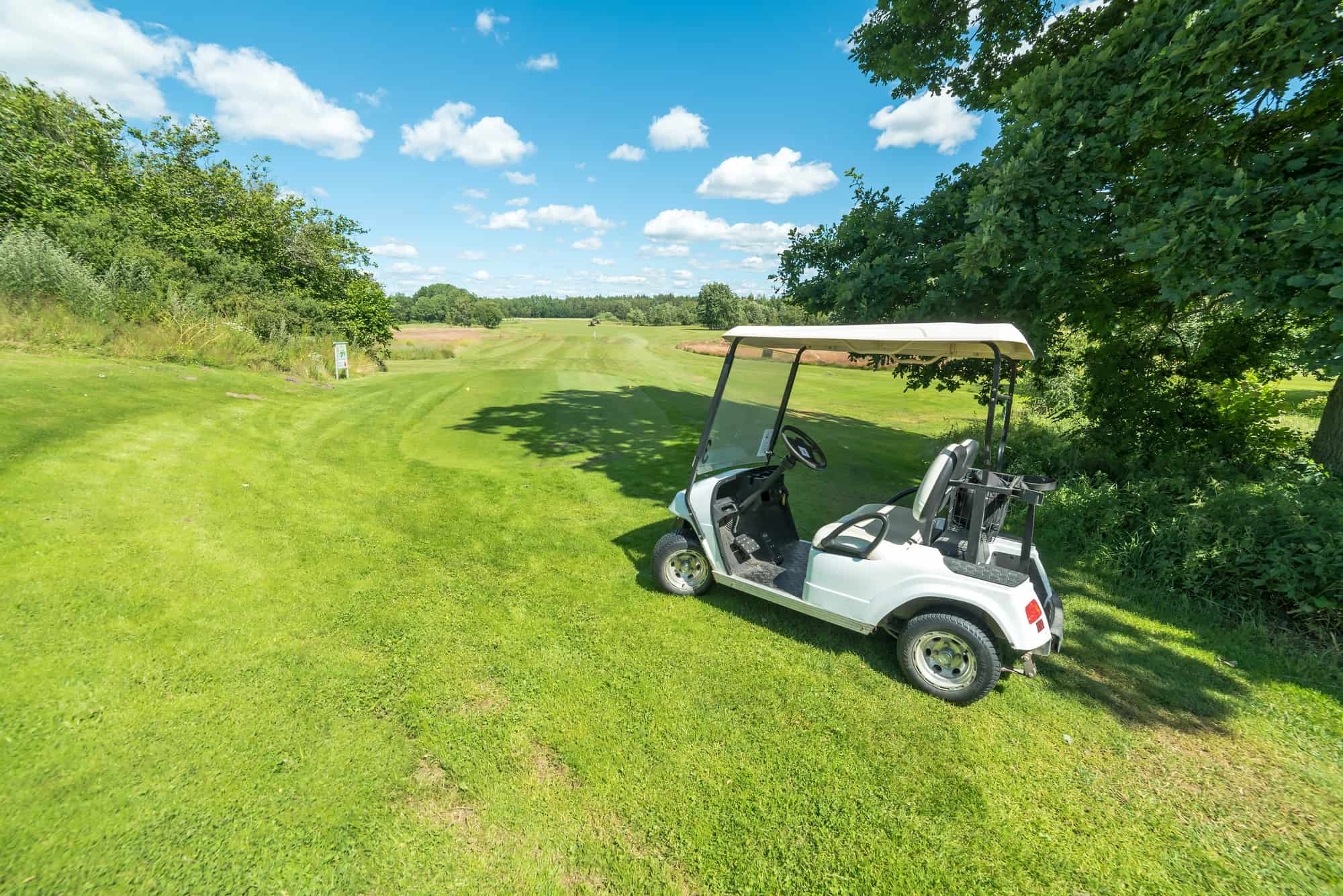
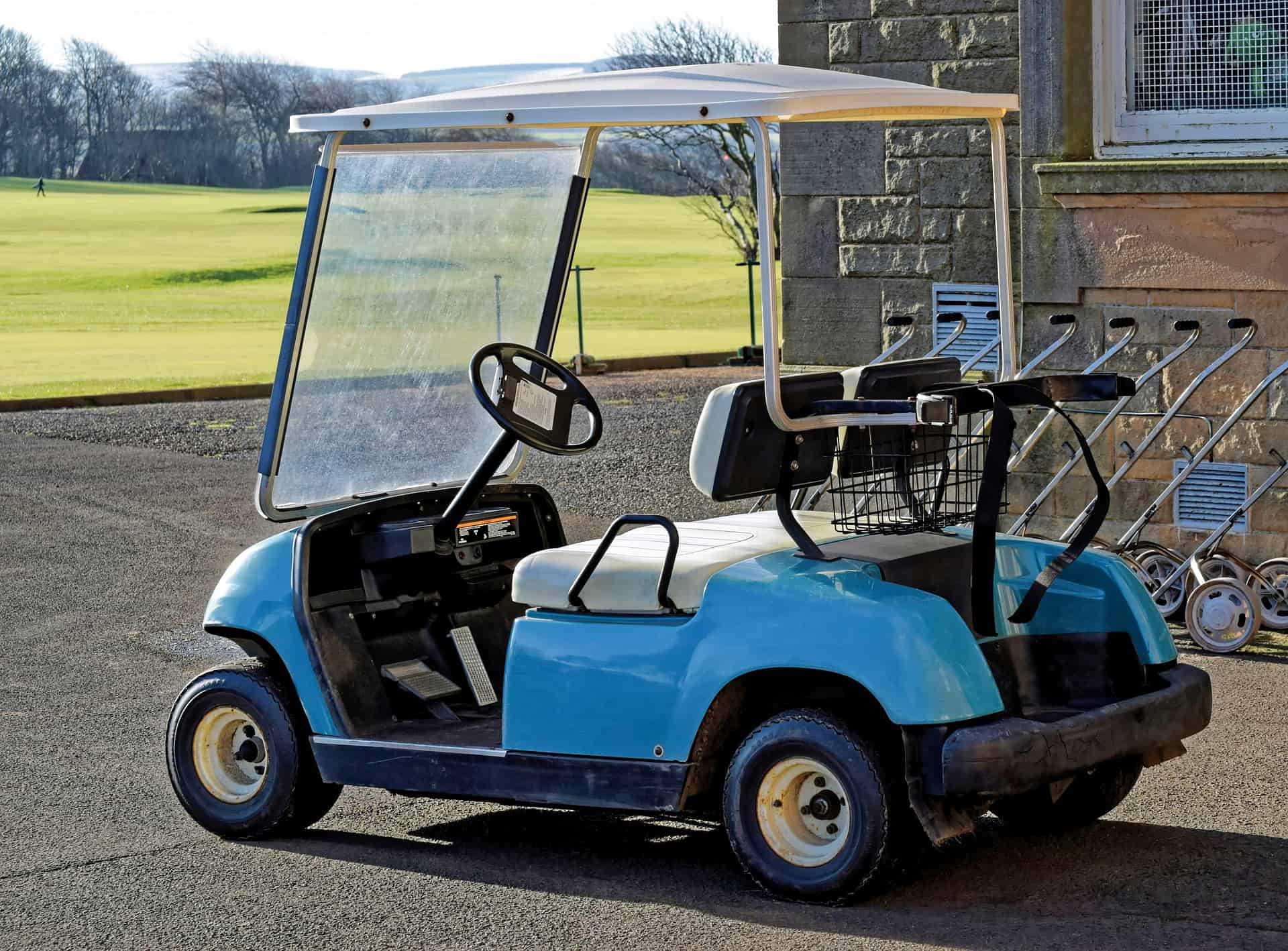
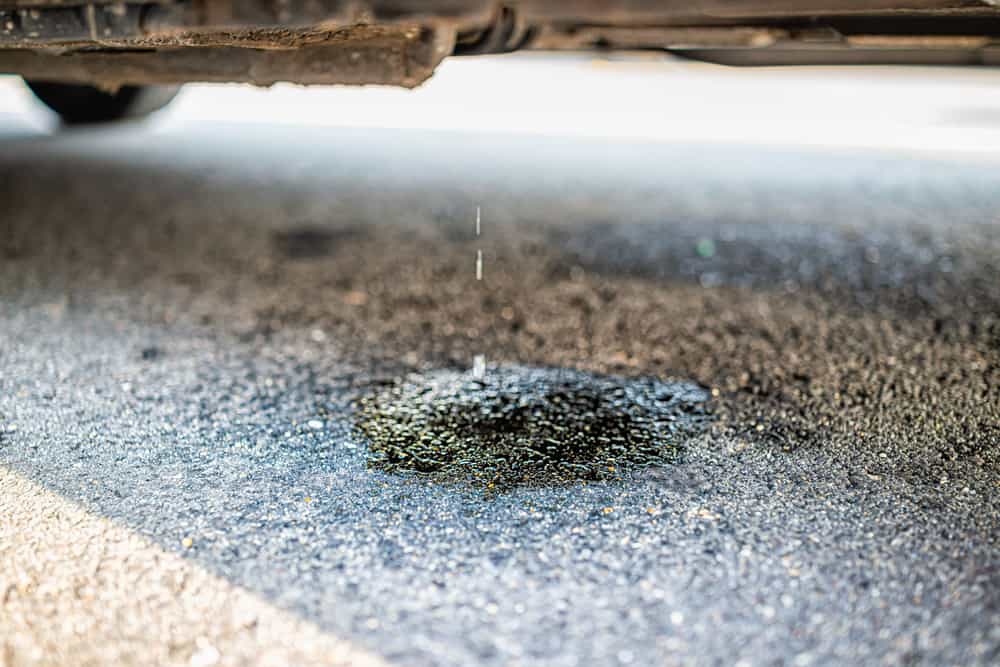
Leave a Reply